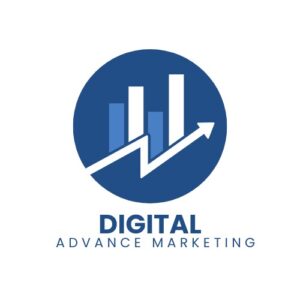How SEO Can Grow Your Business ?
SEO (Search Engine Optimization) is a transformative tool for business growth, directly impacting brand visibility, customer acquisition, and bottom-line revenue. In the digital-first landscape of 2025, as more consumers and businesses rely on online search to discover products and services, effective SEO has become not just an advantage but a necessity.

Here’s how SEO can propel your business forward—and why it should be central to your growth strategy.
1. Unmatched Reach: Connect With High-Intent Audiences
SEO increases your business’s visibility on search engines, where most online journeys begin. Google processes over 99,000 search queries every second, and around 94% of user clicks go to organic listings rather than paid ads. This means that optimizing for search engines directly puts your brand in front of people actively searching for what you offer—a highly qualified audience with high conversion potential.
-
Key stat: 75% of users never scroll past the first page of search results, making top rankings critical for traffic.
2. Builds Lasting Brand Credibility and Trust
Ranking highly in search results signals authority and trust to potential customers. SEO leverages Google’s E-E-A-T guidelines (Experience, Expertise, Authoritativeness, and Trustworthiness), ensuring your site not only attracts visitors but also builds brand reliability. Featured snippets (prime search result placements) earn up to 42.9% click-through rates, exponentially increasing your exposure and perceived expertise.
-
Key stat: Content referenced in Google’s AI Overviews is 52% more likely to come from pages already ranked in the top 10.
3. Drives Sustainable, Cost-Effective Traffic
Unlike paid ads, the benefits of SEO accumulate and compound over time. Once optimized content ranks, it can drive steady, “evergreen” traffic without continuous spending. A single well-optimized blog or landing page can deliver hundreds or thousands of targeted visitors monthly at a fraction of the cost of PPC campaigns.
-
ROI leader: 49% of marketers report that organic search brings the best return on investment out of all digital marketing channels.
4. Improves User Experience and Increases Conversion Rates
SEO is not just about keyword rankings—it’s about optimizing the whole website experience. Google and other search engines now prioritize user-focused metrics: mobile optimization, site speed, content relevance, security, and ease of navigation. As a result, SEO forces businesses to improve their sites overall, resulting in happier visitors and increased conversion rates.
-
Mobile matters: As of 2025, over 63% of all web traffic is mobile. Mobile-friendly design is now essential for both search rankings and user engagement.
5. Captures Local and “Near Me” Searches
For brick-and-mortar stores and service providers, local SEO is crucial. Most people search online before visiting a business location, and appearing in “near me” searches can deliver high-intent foot traffic. Tactics such as Google Business Profile optimization, local citations, and review management are powerful for capturing nearby customers.
6. Adapts to Evolving Search Behaviors and Technology
The search landscape is evolving rapidly: voice and mobile searches are better than ever, and generative AI is beginning to play a role in search results. SEO helps businesses keep pace with these changes—by targeting natural language queries for voice search, optimizing for featured snippets, and staying agile as algorithms shift.
-
Emerging trend: By 2025, 20.5% of the global population uses voice search, yet only 13% of marketers focus on voice optimization—a significant opportunity for early adopters.
7. Outperforms Competitors and Levels the Playing Field
SEO allows even small businesses with limited budgets to compete against larger brands. By focusing on niche keywords, local searches, and content quality, smaller companies can surpass bigger rivals that neglect their organic presence. Plus, historical trends show that nearly 60% of top-ranking pages are three or more years old, proving that sustained, strategic SEO can yield long-term competitive advantages.
8. Delivers Powerful Competitive Insights
SEO is inherently data-driven. Ongoing analysis of search trends, competitors’ strategies, and customer behavior reveals valuable business intelligence. These insights help you pivot quickly to capture new market opportunities—whether through new product pages, blog topics, or targeting emerging keywords.
9. Fuels Other Digital Marketing Channels
SEO’s impact is not limited to your website; it amplifies the effectiveness of all your digital marketing. High-ranking content supports social sharing, influencer outreach, and email marketing. By ensuring your site architecture and content are optimized, every other digital campaign has a stronger foundation to generate results.
SEO in 2025: Why Now Is the Time to Invest
-
The global SEO market is poised for explosive growth, forecasted to rise from around $86.7 billion in 2025 to over $157 billion by 2029, as more businesses recognize that search visibility is essential for digital survival.
-
SEO adapts to user behavior—mobile-first (over 92% of users online via mobile phones), long-form content (3,000+ word articles win 3x more traffic and 4x more shares), and AI-assisted search (Google’s AI Overviews).
-
Generative AI, enhanced mobile usage, and zero-click searches are creating both new challenges and opportunities—for businesses that prioritize SEO, this means greater market share as trends shift.
Getting Started With SEO for Growth
-
Audit your website: Analyze current performance for technical errors, keyword rankings, mobile usability, and content gaps.
-
Develop a keyword strategy: Target a mix of high-volume, niche, and question-based keywords relevant to your business and audience.
-
Create high-quality, comprehensive content: Focus on answering user questions, showcasing expertise, and providing unique value.
-
Prioritize user experience: Ensure fast load times, mobile responsiveness, clear navigation, and strong calls to action.
-
Build quality backlinks: Earn links from reputable sites in your industry to boost authority.
-
Leverage local SEO: Optimize your Google Business Profile, build citations, and encourage customer reviews if you serve a physical location.
-
Measure and iterate: Use analytics tools to track progress, refine strategies, and stay ahead of algorithm changes.
SEO in 2025 is not a one-time effort—it’s an ongoing investment in your business’s digital future. By prioritizing SEO, you position your brand as an industry leader, capture more customers, and build a business that thrives in an ever-changing digital world.
